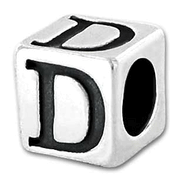When a victim dies, medical investigators approximate the time frame, usually a two to four-hour gap of time with the help of various signs. Following are the signs, which help them to determine them the time of death:
Different signs are used by the medical investigators to estimate the time of death. The time frame usually is two to four hours between the victim's death. Following are some of the signs:
* After the death, there is an instant stiffening or rigidity of the muscles. This is called Rigor Mortis.
* Blood pooling known as lividity.
* Body core temperature.
* The corneas in the eyes cloud.
* Proof of decompositional process.
* The absence or presence of purge fluid.
* The body tissue dryness.
The brain and the liver are most commonly used to find out the body core temperature, as they are high in mass and density. There is a fall in the body temperature toward the surrounding temperature. The rate of fall of the body temperature is one-and-a-half degrees per hour. Depending on the factors such as the amount of fat, the amount of blood loss, the amount of type of clothing worn by the victim, the location of body such as near a heating or air-conditioning vent, inside a cooler the body temperature varies. It also depends on the weather conditions like air temperature, wind and precipitation (rain or snow).
Shoe Print Casting
A three-dimensional impression of footwear can be obtained by casting. Plaster of Paris was the most ordinary casting technique used by experts in the past. But, using plaster of Paris was a messy and not so successful procedure. Casting footwear impression has been made easier and more successful by the use of newer and better quality dental stone casting materials and simpler casting methods developed in recent years.
But the weight of the dental stone causes soft surfaces such as snow to collapse. Therefore, these traditional methods using heavy casting materials do not work well on soft surface such as snow. Hence, the use of Snow Print Wax or paraffin wax and sulfur casting have emerged as alternative methods to cast footwear impressions in snow.
Sulfur casting is used, sometimes by the investigators and experts to make a mold of the impression in snow. Sulfur is melted and then cooled to a temperature just above its crystallization point. Then, the liquid sulfur is rapidly poured into the snow impression. This method is used for casting with the help of melted sulfur. When the sulfur comes in contact with the snow, it cools quickly due to the cold temperature of the snow and immediately recrystallizes, thus capturing the impression. To allow the inner areas to be cooled completely, the cast must be left untouched for at least 30 minutes. As the sulfur casts are fragile and brittle in nature, they must be handled carefully.
Subscribe to:
Post Comments (Atom)

No comments:
Post a Comment